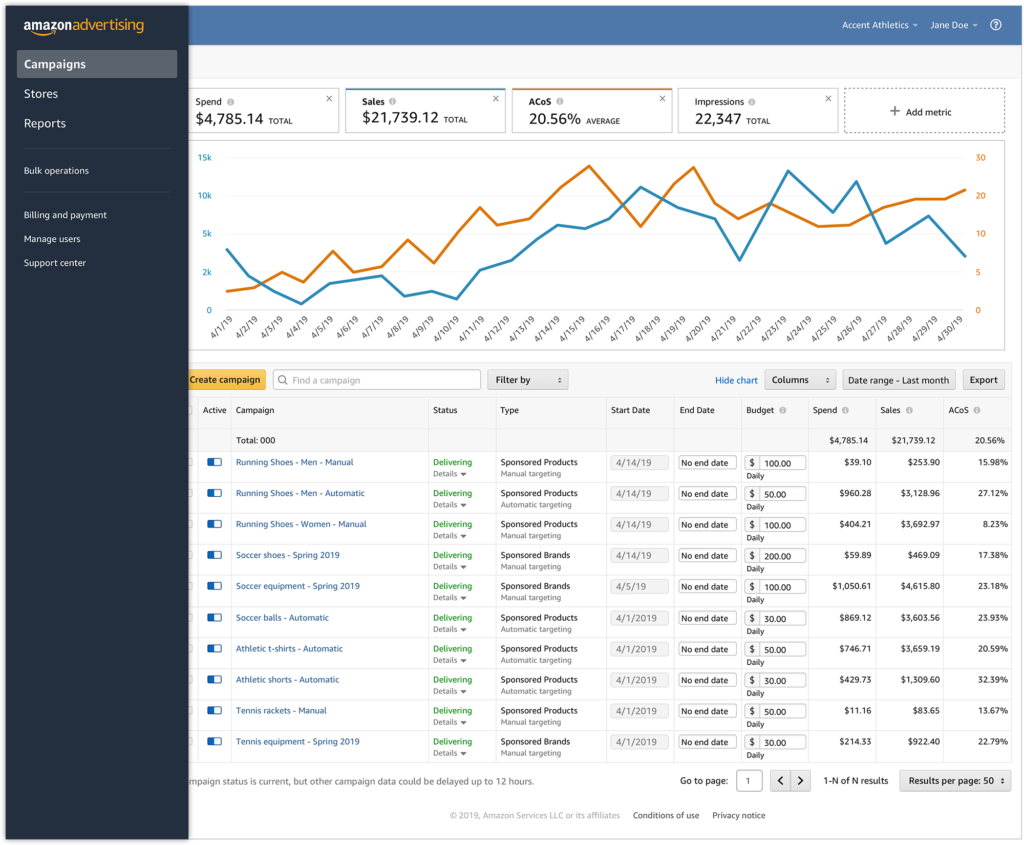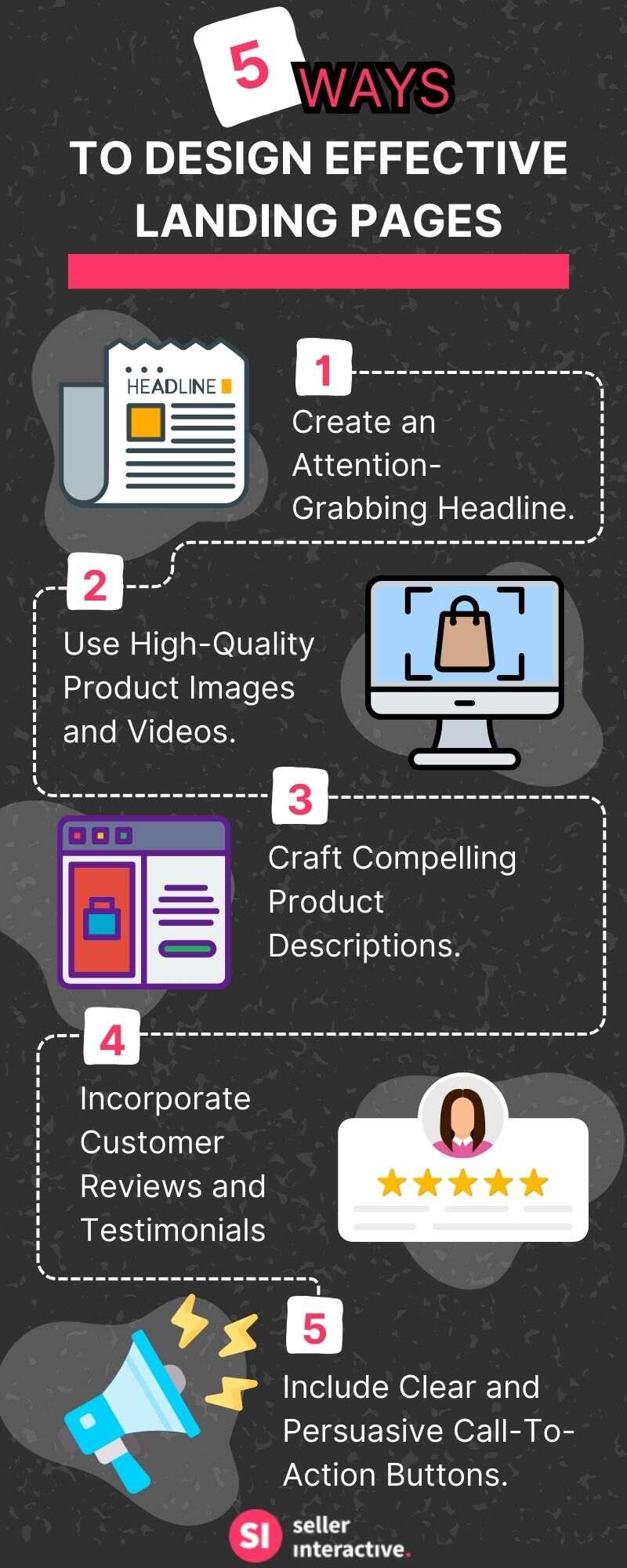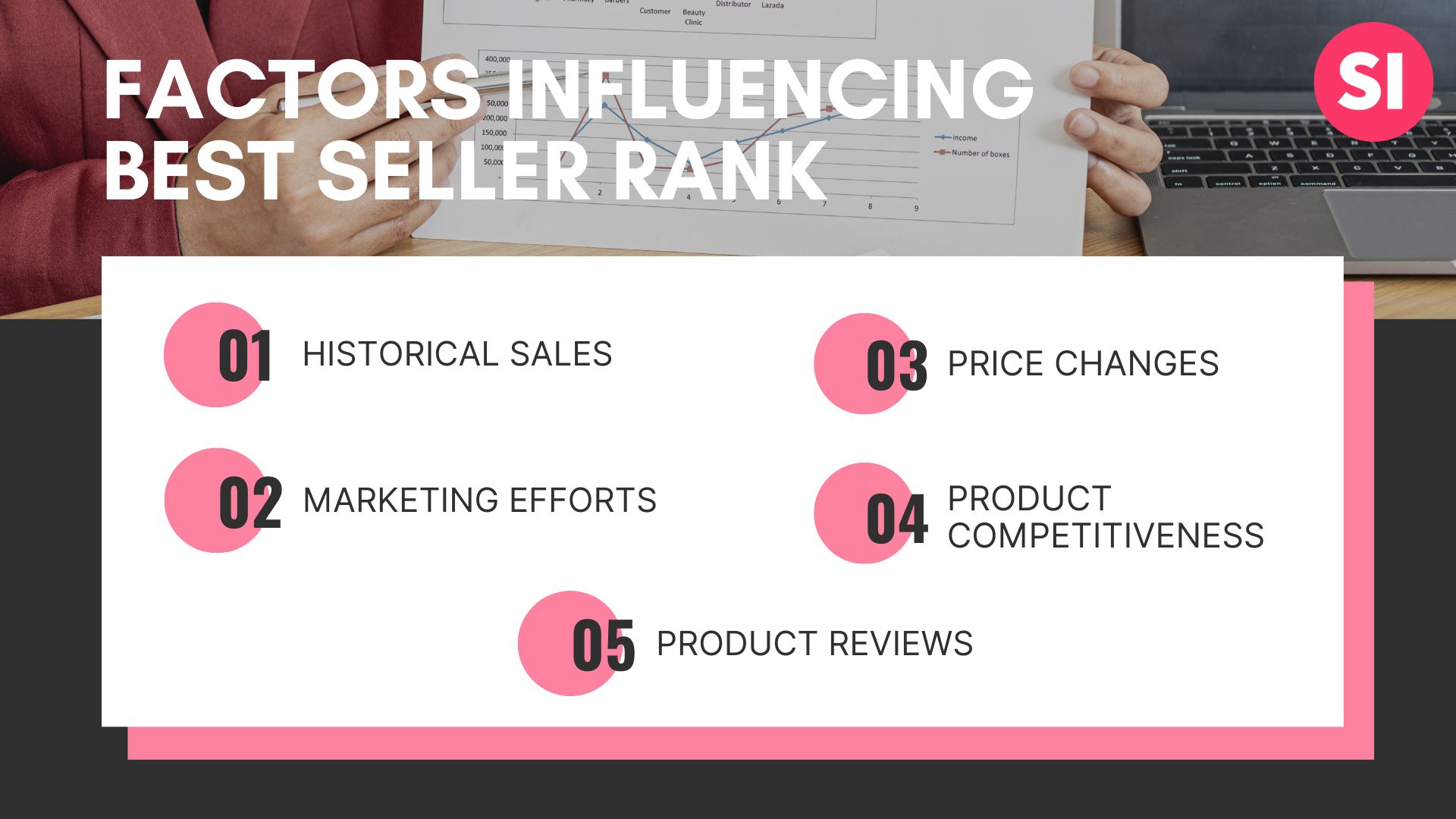Last updated on June 23rd, 2023
 Written by faith
Written by faith
Your work on Amazon doesn’t stop after you click the “Submit” button. To master Amazon paid ads management, you must learn how to analyze report data. From search term reports, targeting reports, spend reports, keywords reports, and more, you need to be well-versed in the numbers to manage your business better.
The mastery all starts with an in-depth understanding of standard digital advertising metrics and the ecommerce marketing metrics that Amazon provides. These metrics can help you properly conduct Amazon pay-per-click (PPC) optimization for your campaigns.
This article will identify which sponsored ads you can utilize as a seller. Moreover, we will help you establish a basic understanding of Amazon’s different metrics, the different ways to view ad reports, and how to use performance metrics to make your ads more relevant to customers.
Standard Digital Advertising and Ecommerce Marketing Metrics
The only way to check your Amazon PPC campaign performance is through various advertising reports Amazon generates. Some of which are search term reports, matched target reports, and campaign reports. Let’s identify each one:
Standard digital advertising reports
- Clicks are the total number of times customers click an ad.
- Impressions are the total number of times customers spot an ad. You can dive into the details on ad impressions per ad group or search term impression shares through a search term impression share report.
- Cost-per-click (CPC) is the average amount spent per click. Through a search terms report, you'll know which ads cost you but aren't giving you the sales you need.
- Click-through-rate (CTR) is the ratio between how often customers click on an ad and how many times it is displayed. Check the search term impression share report to know which keywords give you the clickthrough you are aiming for and make the ad spend worth it.
- Advertising spend is the total amount spent on advertising budget broken down per ad type—Sponsored Display, Sponsored Products, Sponsored Brands, or Amazon Store.
- Return on ad spend (RoAS) is the total product sales divided by total advertising spend. Identify campaigns that are bringing in the clicks and sales you’re aiming for.
Ecommerce marketing metrics
- Conversion rate is the percentage of customers who click on an ad and make a purchase. Know the buyer search terms that convert and the purchased product reports to see which items are bestsellers.
- Detail page views are the total number of times customers view your product detail page.
- Units sold are the total number of units sold by your brand. Know the bestsellers and items with advertising opportunities to gain more sales.
- Total orders allow you to take a peep at the total number of orders under your brand in a purchased product report.
- Attributed sales are the total dollar amount of products sold by your brand. The monetary value should also be present in a purchased product report.
- Advertising cost of sales (ACoS) is the total amount spent on a campaign divided by the total sales over the entire campaign duration.
Below, we’ll explain how to access these metrics. Then, we will explain how to use these ad data to improve your Amazon paid ads management.
How To Access the Metrics
If you want to run a keyword report, campaign placement report, performance over time report, or an overall performance report, where will you look? Where can you find these valuable metrics included in a search term report, placement report, or targeting report? There are three ways to access and retrieve them.
Amazon Advertising Console
Amazon's advertising console was redesigned to be more flexible and user-friendly, as shown below.
Amazon Advertising Console Functions:
- As an example, you can analyze your campaigns by sorting the ACoS from highest to lowest to determine which needs optimization.
- You can also export Amazon advertising reports from the console to review them offline.
Downloadable Amazon Advertising Reports
The Amazon advertising console provides account-level data for Sponsored Products and Sponsored Brands. You can access the console by clicking the Reports menu on the dashboard.
This feature is available to both types of sellers, as mentioned above. The only difference is the type of Amazon advertising report and paid ad each seller can view.
Overall, here are the downloadable advertising reports you can use to manage your Amazon paid ads:
Targeting Report: Provides insights into performance and sales metrics for keywords, ASINs, and categories in all campaigns that must have at least one impression.
Campaign Report: Provides a summary of your sponsored ad’s performance per campaign. You can specify a date range.
Search Term Report: Provides visibility based on the keywords the customer enters while shopping on the site before they click on your ad.
Advertised Product Reports: Provide insights into sales and performance metrics for advertised ASINs in all campaigns with at least one impression.
Purchased Products Reports: Show which products were sold even without advertising.
Performance Over Time Report: Provides the summary of clicks (ad clicks or impression clicks), ad spend, and average CPC for all your campaigns over a selected period.
Placement Reports: Provides visibility regarding the performance of a campaign on top of search compared to the rest of search and product page placements.
Campaign Placement Report: Provides a breakdown of Amazon's advertising performance by ad placement.
Keyword Placement Report: Provides a breakdown of keyword performance by ad placement (top of the search, rest of search, product pages).
Note that some reports are available only for specific ad types.
API
The Application Programming Interface (API) is a way to interact with a separate software component or resource programmatically. In this case, it is the Amazon Advertising API—a way to automate, scale, and optimize Amazon paid ads.
Here are the advantages of using the Amazon Advertising API:
- It lets you automate repeated tasks by schedule, such as downloading daily performance data.
- It allows you to customize reporting dashboards.
- It removes friction by letting you program campaign creation, modification, and optimization.
- It gives you the freedom to integrate third-party Amazon PPC optimization tools or even develop your own custom tools.
Amazon PPC Optimization Hacks
It is not enough that you know how to set up PPC on Amazon—you should also master a few tricks to tweak poor-performing Amazon PPC campaigns or improve ads with high conversion rates.
First, determine your campaign objective. Doing so helps you measure the performance of your campaigns. To improve sales efficiency, look closely at the performance metrics like ACoS, RoAS, sales, CTR, and conversion rate. On the other hand, if you want to increase brand awareness, the only metric you should monitor is impressions.
Once you’ve decided your objective, you can start applying the Amazon PPC optimization tips below.
Budget
There are two scenarios you may face when it comes to budget. It is either you use your entire budget or underspend.
Using your entire budget only means you don’t allocate an adequate amount for that day. The downside is you may lose sales. Luckily, you can adjust your budget anytime, and changes will take effect immediately.
How will you know if you’re running out of budget? Amazon sends an out-of-budget notification via email and the Amazon advertising console. Alternatively, you can decrease bids/budgets of low-performing campaigns and instead use the budget for higher-performing campaigns.
If you’re underspending, you can increase the visibility of your existing campaigns and well-performing keywords. You can also create a new campaign for products that don’t have a sponsored ad yet.
Advertised ASINs
Boost your sales by removing underperforming ASINs; learn to let go to reach satisfactory sales performance. How can you trace this? Review your advertised product reports and look for performance metrics that have:
- The highest ACoS
- The lowest RoAS
- A high CTR but low sales
Moreover, you can also track bestselling ASINs by doing the opposite. Advertise those ASINs with the lowest ACoS and highest RoAS.
But if your objective is to maximize brand awareness, ensure your advertised ASINs have passed the retail readiness test. A retail-ready ASIN has the following characteristics:
- Accurate and descriptive advertised product titles
- High resolution and accurate advertised product images
- More than a 3.5-star review rating
- More than 15 reviews
- Enhanced Brand Content
- Adequate stock in your inventory
Keywords
If you have any understanding of the digital marketing strategies of Amazon, you’ll know that one is to focus on customer experience relentlessly. The online shopping titan’s mission is “to be Earth’s most customer-centric company.” Take note that it isn’t seller-centric but customer-centric.
This is why Amazon holds high regard for relevant keywords. When a customer enters a keyword in the search box, Amazon only displays relevant information related to the customer’s search term. Amazon serves to please its customers, and you should, too.
If you notice some of your keywords need to perform better, you must optimize them immediately. Here are the tips you should consider doing:
- Delete underperforming keywords by identifying keywords with the highest ACoS and lowest RoAS in the target reports.
- Add negative match keywords to prevent yourself from paying for unwanted clicks. These keywords are those with low sales, high ACoS, and/or low RoAS.
- Run automated Sponsored Product campaigns to gather high-performing customer searches. Add these newfound keywords to your manual campaigns.
Bids
Amazon operates in a real-time auction environment to decide which ads to display based on their bid price. The general rule is the seller with the highest bid grabs the top spot in the search results, followed by the second highest, and so forth. Besides the bid price, the product’s relevance or keyword also matters.
- Decrease bids on low-performing keywords with low conversion rates. Lower the bid to just below the average CPC.
- If you want to improve awareness or impressions, increase bids on keywords with high conversion rates, low average CPC, and low ACoS.
- You can appear in more placements by increasing bids. Identify Sponsored Brand campaigns with low ACoS and/or high RoAS by checking the placement data to maximize your ad placements.
Amazon Advertising Reports With Seller Interactive
Once you have mastered reading and interpreting your Amazon advertising report data, the possibilities to optimize and manage your Amazon paid ads are endless. However, remember that optimization is a continuous process and not just a one-time thing. Make it a habit to review and analyze your overall performance data regularly. In this way, you can build a successful and thriving Amazon business. Do you need more conversions from your Amazon PPC campaigns? Partner with a campaign manager now. Seller Interactive has a team of expert Amazon consultants willing to help you with Amazon paid ads management.




